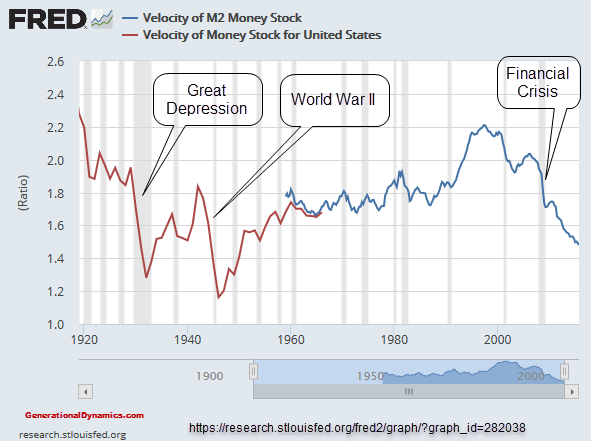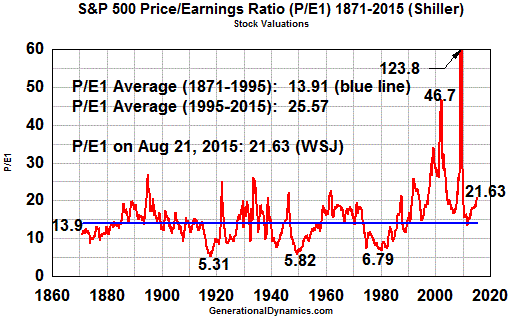vincecate wrote:
> There is good reason to believe the velocity of money is a
> function of the interest rate and inflation rate. If there is no
> inflation and no interest, money moves really slow. At some point
> there will be inflation and higher interest rates. At least I
> think this is certain. To me the hard question is just the
> "when".
> More on velocity and source of above graph here:
>
http://www.hussmanfunds.com/wmc/wmc141103.htm
There's no reason whatsoever to believe that. Imagine a woman saying
to herself, "Gee, the Fed just announced a new interest rate, and CNBC
just reported the latest interest rate, so I think I'll buy that new
pair of shoes." That's total fantasy.
What Hussman has done is to mash together decades of data that isn't
even comparable, since it comes from different generational eras, and
he's managed to make a simple concept as complex and ununderstandable
as he can with two ridiculous charts.
My chart makes it crystal clear what's going on:

The reason why you don't see a chart like this anywhere is because it
makes it too clear what's going on. Economists make their money by
referencing obscure statistics with little meaning, and then don't
respect generational boundaries, so they're even more meaningless.
Here's another chart you never see:

CNBC and Bloomberg talk all the time about stock valuations, and yet
I've never seen any chart of P/E ratio versus time.
And that's pretty remarkable. I've probably seen tens of thousands of
charts, graphing all kinds of obscure stuff, but incredibly not a
single time have they used one that graphs the P/E ratio over time.
Not one single time out of tens of thousands. Incredible!
And now we see the same thing with Hussman. Instead of graphing the
velocity of money over time, which would make it crystal clear what's
going on, he mashes together data in a graph that's almost totally
incomprehensible.
The velocity of money can be computed from the interest rate and the
inflation rate, or from the nominal GDP and the monetary base, but the
tail doesn't wag the dog. The velocity of money is organically
determined by the mood and behavior of generations of people, making
buy or don't-buy decisions without having the vaguest clue what the
nominal GDP and monetary base are.